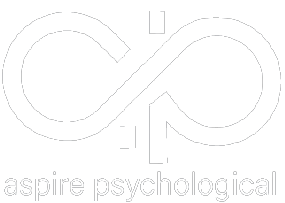Panic is a natural human emotion that aids survival. It is the precursor to the fight or flight response we experience under significant stress. But for some people, momentary instances of panic quickly turn into full blown panic attacks. They need panic attack therapy to help them manage.
One of our previous blog posts addressed three different ways to approach panic attack therapy. Within each of those approaches are multiple techniques a therapist can use to help patients. That is what we will focus on in this post. We will look at some of the techniques used to address panic attacks in a productive and meaningful way.
We would also like you to know that Aspire Psychological offers a variety of mental health treatments from our New Jersey and New York offices. We also offer online therapy by way of telemedicine.
Evaluation and Collaboration
At the root of meaningful panic attack therapy are two important principles: evaluation and collaboration. Evaluation is the process of identifying a patient’s panic triggers. This may involve relating experiences or answering a series of open-ended questions. It might also lead to a discussion on current coping mechanisms.
The collaboration aspect of panic attack therapy indicates that therapist and patient work together to develop a meaningful treatment plan. Rather than the therapist dictating what should and will happen, the two work together to find the best way to address panic attacks based on the patient’s needs, goals, and preferences.
Helping Patients Relax
As for specific techniques, one of the things a therapist will do during panic attack therapy is help a patient learn to relax. This can be accomplished through breathing exercises, progressive muscle relaxation practices, and even guided imagery that helps to calm things down.
Helping patients learn to relax benefits them in the sense that relaxation can reduce the physical symptoms associated with panic. When those symptoms are less intense, managing anxiety tends to be easier.
Mindfulness Training
Another helpful technique for addressing panic attacks is mindfulness. Mindfulness is the practice of focusing one’s mind and attention on the present moment – and doing so without judgment. There is no right or wrong in the moment. There is no past or future. There is only the here and now.
Therapists can train patients in how to practice mindfulness during panic attacks. And once a person knows and understands the basic concept, a panic attack can be managed by stopping and being mindful. Mindfulness is a way to manage overwhelming emotions just as relaxation can manage the physical symptoms of panic.
Practical Skills
Teaching patients practical skills is another helpful way to address panic attacks. In a panic attack therapy scenario, the skills being learned would be coping skills designed to help a person manage anxiety. A therapist might also teach skills related to challenging negative thoughts and developing healthy strategies for regulating emotions.
Exposure in a Safe Environment
Some cases of panic attack therapy call for exposing the patient to their triggers in the safe environment of the therapist’s office. Repeated exposure can help a patient form more realistic thoughts and expectations that ultimately lead to better anxiety management. Exposure can also help build confidence and resilience.
The bottom line is that there isn’t a single technique for bringing an end to all panic attacks. Patients respond differently to various therapies and techniques. But when therapist and patient work together in a collaborative manner, they can come up with the best way to overcome. And in fact, that’s when panic attack therapy works best.

